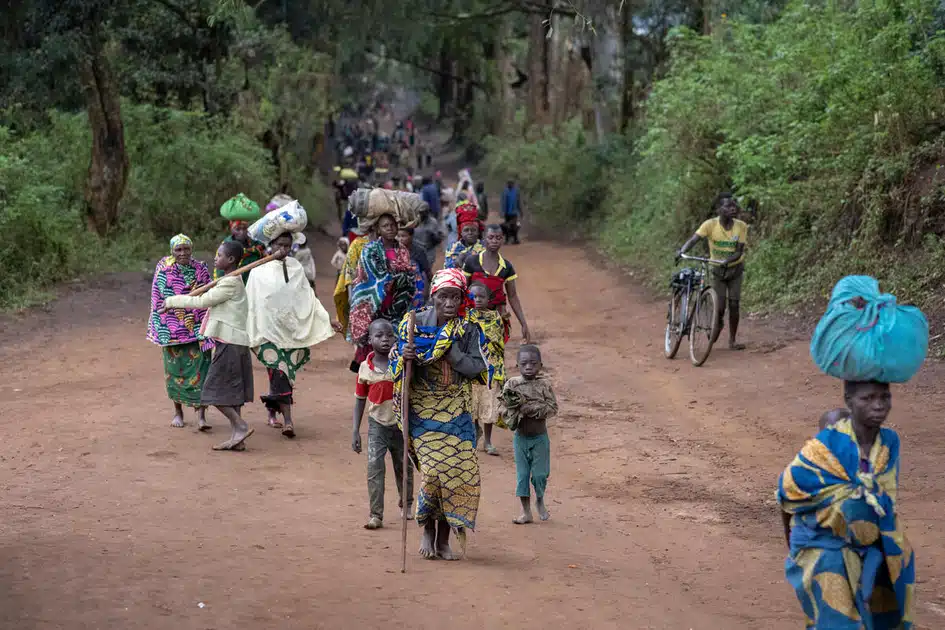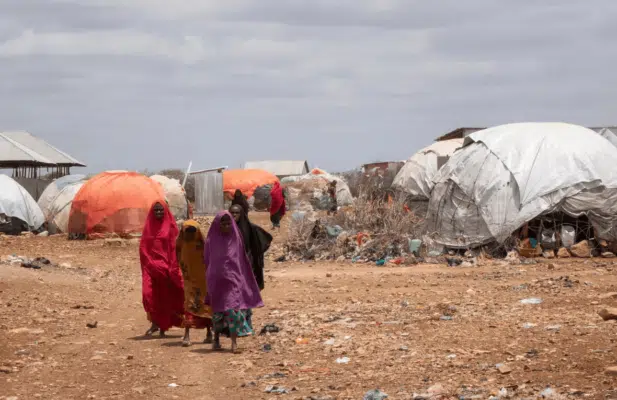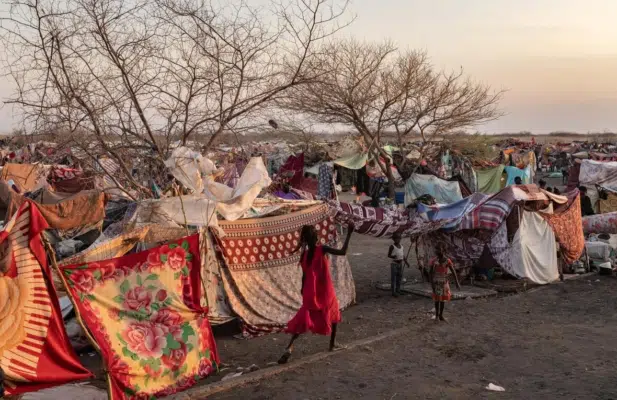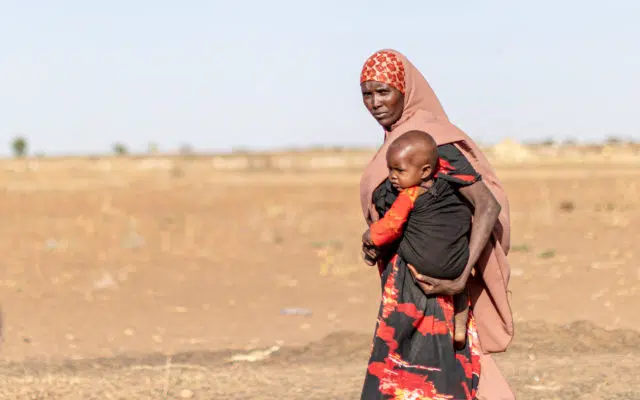
After spending the night with host families in the nearby city of Bulé, internally displaced people return to their temporary accommodation in Plain Savo in the Democratic Republic of the Congo. © UNHCR / Hélène Caux
Canada leads on refugee resettlement as a record increase in global forced displacement heightens urgency of protecting the right to seek asylum
OTTAWA, 14 June 2023 – Canada has cemented its position as the world leader in refugee resettlement amidst a record surge in the number of people uprooted by war, insecurity, persecution and climate-driven upheaval, according to data released by UNHCR, the UN Refugee Agency.
In 2022, Canada resettled 47,600 refugees – more than any country for the fourth consecutive year – with arrivals increasing by 133 per cent following 2021’s COVID-19-related restrictions, according to UNHCR’s annual report released today.
In addition to resettlement, the continued rise in displacement around the world underscores the importance of safeguarding the right to seek asylum. Fair and efficient asylum systems are a crucial step in ensuring that refugees receive protection and public confidence in the asylum system is maintained.
“Forced displacement is one of the biggest issues of our time but there are solutions if we work together,” said Rema Jamous Imseis, UNHCR Representative in Canada.
“Canada has an important role to play in ensuring those forced to flee can find safety, by protecting the fundamental right to seek asylum and continuing to be a leader in refugee resettlement.”
UNHCR’s flagship report, Global Trends in Forced Displacement 2022, found that by the end of 2022, the number of people displaced by war, persecution, violence and human rights abuses stood at a record 108.4 million, up 19.1 million from a year earlier, which was the biggest ever increase.
The upward trajectory in global forced displacement showed no sign of slowing in 2023 as the eruption of conflict in Sudan triggered new outflows, pushing the global total to an estimated 110 million by May.
“These figures show us that some people are far too quick to rush to conflict, and way too slow to find solutions. The consequence is devastation, displacement, and anguish for each of the millions of people forcibly uprooted from their homes,” UN High Commissioner for Refugees Filippo Grandi said.
Of the global total, 35.3 million were refugees, people who crossed an international border to find safety, while a greater share — 58 per cent, representing 62.5 million people – were displaced in their home countries due to conflict and violence. The war in Ukraine was the top driver of displacement in 2022. The number of refugees from Ukraine soared from 27,300 at the end of 2021 to 5.7 million at the end of 2022 – representing the fastest outflow of refugees anywhere since World War II.
Estimates for the number of refugees from Afghanistan were sharply higher by the end of 2022 due to revised numbers of Afghans hosted in Iran, many having arrived in previous years.
The figures also confirmed that, whether measured by economic means or population ratios, it remains the world’s low- and middle-income countries – not wealthy states – that host most displaced people. The 46 least developed countries account for less than 1.3 per cent of global gross domestic product, yet they hosted more than 20 per cent of all refugees. Funding for the numerous displacement situations and to support hosts lagged behind needs last year, remaining sluggish in 2023 as requirements increase.
“People around the world continue to show extraordinary hospitality for refugees as they extend protection and help to those in need,” Grandi added, “but much more international support and more equitable responsibility sharing is required, especially with those countries that are hosting most of the world’s displaced.
“Above all, much more must be done to end conflict and remove obstacles so that refugees have the viable option to return home voluntarily, safely and with dignity.”
While the total figure of displaced continued to grow, the Global Trends report also showed that those forced to flee are not condemned to exile, rather they can and do go home, voluntarily and safely. In 2022, over 339,000 refugees returned to 38 countries, and though lower than the previous year there were significant voluntary returns to South Sudan, Syria, Cameroon and Côte d’Ivoire. Meantime, 5.7 million internally displaced people returned in 2022, notably within Ethiopia, Myanmar, Syria, Mozambique and the Democratic Republic of the Congo.
At the end of 2022, an estimated 4.4 million people worldwide were stateless or of undetermined nationality, 2 per cent more than at the end of 2021.
The Global Trends report was launched six months ahead of the second Global Refugee Forum, a major gathering in Geneva bringing together a range of actors to find new solutions and embed solidarity with people forced to flee and their hosts.
ENDS
Global Trends in Forced Displacement 2022 report is available here.
For more information on this topic, please contact:
In Ottawa/Montreal:
- Levon Sevunts, sevunts@unchr.org, +1 (613) 286-6975





